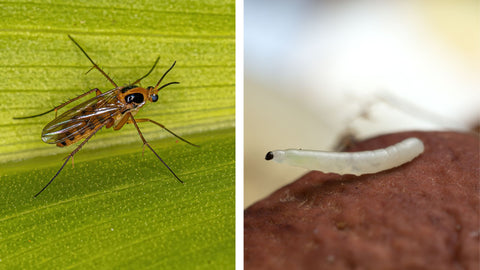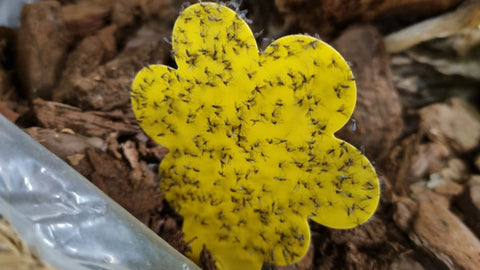One of the downsides of having an incredible indoor garden is that they often attract gnats (also known as fungus gnats). Gnats haven't been known to cause major damage to plants, but the larvae that live in the soil can affect the roots and stunt plant growth, especially in smaller plants, younger plants, and seedlings. The adult gnats are also pretty annoying to have flying around indoors, and the appearance of gnats may indicate that plants are being overwatered (you'll see why a little further into this article).
Getting rid of gnats from your house for good takes a multi-pronged approach. They breed quickly, so a quick defence is a good defence. Here are 3 surefire ways to get rid of gnats once and for all - plus a few bonus tips courtesy of our plant care expert, Odi.
What exactly is a fungus gnat?
Essentially, a gnat is a small flying insect that belongs to the Sciaridae family. They are attracted to decaying organic matter and fungi, often found in moist environments like the soil of houseplants. Here is a close up look at a fungus gnat and fungus gnat larvae.

Why are gnats attracted to indoor plants?
Gnats are attracted to indoor plants because of the moist, organic-rich soil, which provides an ideal environment for larvae to feed on fungi and decaying organic matter. Additionally, the warmth and humidity of the indoors environment mimic natural breeding conditions, making indoor plants an attractive gnat habitat. We know just how hot and humid Summer can get (especially in Australia), so gnats aren't going away on their own any time soon.
Get rid of gnats in 3 easy steps
1. Keep the top of your pot dry
This is crucial to preventing gnats from settling and breeding in the soil of your indoor plants. CUP O FLORA self-watering pots are actually perfect for this because they water from the bottom up - this means no humid, damp topsoil to attract gnats!
We do find that the Medium, Large, and Extra Large CUP O FLORA pots are the best for this purpose as there is a bigger distance between the wick at the bottom and the soil at the top of the inner cup.
Also, it's important not to overwater. When it comes to CUP O FLORA pots there should only be 1-2 cm of water in the reservoir at any given time (the water should not touch the bottom of the inner cup). Think about using a wet/dry cycle; when your plant has drunk all the water, wait a couple of days before refilling.
2. Switch up your soil
If you have a gnat infestation, it's always best to change your soil because that's where the breeding happens! We suggest repotting with well-draining soil OR using soil alternatives like PON or LECA as they don't attract gnats. You could cover the top of your soil with small pebbles/gravel as an additional deterrent.
3. Invest in some high-quality gnat traps
If all else fails - gnat traps are going to be your new best friend. They don't treat the gnat infestation at its core, BUT they definitely help in reducing numbers (and the annoyance factor).
As you can see, they work quite well at attracting and restraining gnats with their sticky surface. This is a picture of one of our gnat traps in use (the flower shape and yellow colour help to add a bit of a cute vibe).

BONUS: Clear out your drains
This one doesn't relate specifically to plants, but it can be helpful in reducing the number of gnats in your home in general. Gnats don't just breed in soil - they love dark, damp, humid places and your drains are as dark, damp and humid as it gets!
Remember these tips next time you're dealing with a gnat infestation. They might just help banish them once and for all!

